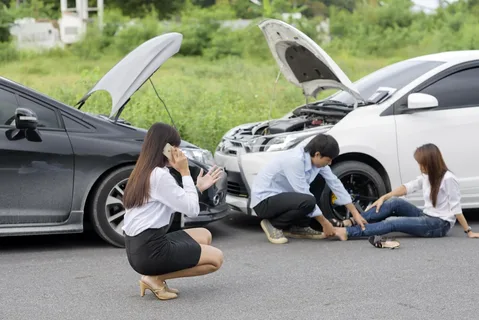In India, having car insurance is mandatory by law, and it is essential to protect yourself from financial losses that may arise from a motor accident. However, simply having car insurance is not enough. To ensure you are fully protected, you must also know how to claim your insurance after an accident. Understanding the car insurance claim settlement process can help you get the maximum benefit from your policy.
In this blog, we will provide a step-by-step guide to help you navigate the motor insurance claim settlement process.
Table of Contents
The step-by-step process of making a car insurance claim after an accident
The steps you should follow to claim car insurance after an accident are listed below.
1. Informing your insurer
The first and most crucial step towards claiming car insurance after an accident is to inform your insurer as soon as possible. This ensures your claim is valid and the insurer can process it promptly.
To inform your insurer, you can call their customer care number or use the insurance provider’s mobile app to report the accident. You will need to provide details such as the time and location of the accident, the extent of damages, and whether you sustained any injuries.
Most insurance policies have a time limit for reporting the incident and making a claim. The insurer may deny or reject your claim if you fail to meet this deadline.
2. Filing an FIR
Filing a First Information Report or FIR at the nearest police station is the second crucial step to claiming car insurance after an accident. The FIR is a legal document that provides the details of the accident, including the date, time, and location, and it acts as proof that the accident took place. It also helps insurers verify the authenticity of the accident, the extent of the damage, and who is at fault.
It is crucial to file the FIR immediately after the accident. The insurer may require a copy of the FIR to process the claim. Failure to file an FIR could lead to claim rejection.
3. Collecting evidence for your claim
It is important to gather evidence, such as photographs or videos of the accident, to support your claim and establish the extent of the damage.
Take clear photographs of the damaged vehicles, injuries sustained (if any), and the surrounding area. Ensure that the photographs accurately capture the damage from different angles. It is also important to collect contact details of witnesses present at the scene who can provide valuable information about the accident.
Remember to collect evidence as soon as possible after the accident, as the condition of the vehicles or the accident scene may change. Preserve the evidence and present it to the insurer when making a claim. The insurer may use the evidence to verify the claim’s authenticity and determine the extent of the damage.
4. Submitting required documents to the insurer
To initiate the claim settlement process, provide the necessary documents to support your claim. These documents include a driving license, car registration certificate, and copy of the FIR. Additionally, you may be required to provide other documents as requested by your insurance company. Be sure to submit clear copies of all the required documents to avoid any delays in processing your claim.
5. Requesting a surveyor from your insurer
After you have submitted all the required documents, you can request a surveyor from your insurance provider to assess the damages to your car. A surveyor is an expert appointed by the insurance company to assess the extent of the damage to your vehicle and estimate the cost of repair. The surveyor will usually inspect the vehicle within two to three days after you file the claim. During the survey, the surveyor will examine your car’s damages and assist you in selecting the nearest & the most appropriate garage to carry out the repairs.
Once the surveyor completes the assessment, the person will submit a report to the insurance company, determining the amount payable for the claim.
6. Getting your car repaired
After the surveyor has assessed the damage, you can proceed to get your car repaired, which is the final step of the car insurance claim process. Depending on your preference, you can choose to get the repair work done at any of the garages within the insurer’s network or at a garage of your choice. There are two ways of settlement:
- Cashless settlement: If you pick a garage present in the insurer’s network, you’ll have the added benefit of not having to pay anything out of your pocket. Since the insurer will directly settle the bill with the garage.
- Reimbursement mode of settlement: In this mode, you must initially pay for the repair work and then submit the original bills and receipts to the insurer for processing the claim. Once the claim is processed and approved, you will receive the reimbursement for the amount you paid.
Conclusion
Filing a motor insurance claim after an accident may seem complicated, but it is important to remember that your insurer is there to help you. It is necessary to inform the insurer as soon as possible, file an FIR, collect evidence, and submit the necessary documents. The final steps are requesting a surveyor from the insurer and getting the car repaired. Understanding these steps can help you make a successful claim and avoid rejection. It is also crucial to choose a car insurance policy that offers personal accident insurance coverage and has a good car insurance claim settlement ratio. Remember to stay calm in the event of an accident and prioritise your safety and well-being.
Also Read: Why Buying A Used Car Can Save You Money

